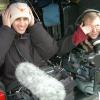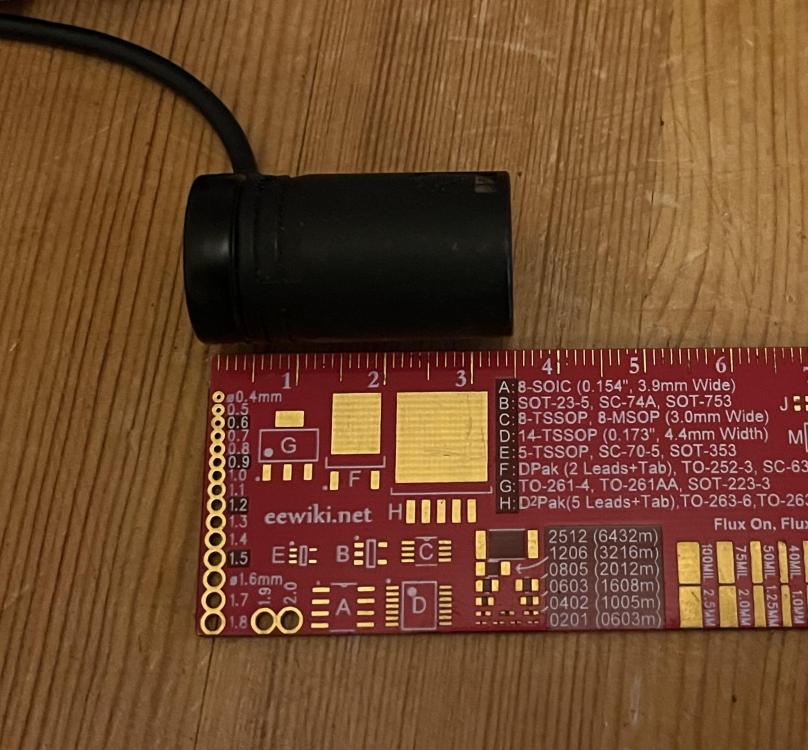-
Posts
1,287 -
Joined
-
Last visited
-
Days Won
20
About rich
- Birthday January 1
Profile Information
-
Location
london.uk
-
About
apparently i cant leave this bit blank so i feel obliged to add something
-
Interested in Sound for Picture
Yes
Recent Profile Visitors
The recent visitors block is disabled and is not being shown to other users.
-
use your 416 on the boom, lav of choice on the cast. and use the RSM91 or MK41 for a clean sea fx track. the fx track will help smooth out the difference between the lav mics as the cast move their body positions toward or away from the sea. maybe not for you on the day, but it might help post. be careful how the boom is moved though. if you can get two booms on the scene, it will help keep the background noise consistent as the booms wont have to move too much. but it it needs to be one boom, you should try to avoid changing the angle of the mic too much, otherwise the background noise will change too much as the angle of the mic is changed. to put that another way, always keep the boom mic pointing straight down, even as it is moved between characters. how much budget do they have for post? ive seen a demo of one or other of the post tools, that literally faded down the sea noise from the mix track with no noticeable artefacts.
-
I think it’s easy to notice that there is a difference between the two if you listen in stereo (one track in each ear) your brain notices that there is something odd going on. but yes. Tonally, they are pretty similar.
-

Mystery: Why are footsteps on mic while dialogue is off mic?
rich replied to Beepy's topic in General Discussion
have you had any contact with the location team? was the mix track ok? i cant imagine that any long form job would have kept the location team on if all they were hearing on the day and in dailies was off mic dailogue. could be that they were relying on radios all the time? and as you mention it was only some of the slates, what were the shot sizes? was it the wide shots where the radios were mixed higher in the mix, and then when the boom could get in close, that was the favoured mic in the mix. the type of mic wont affect wether something sounds on or off mic. just its position. a MKH60 might have a bit more isolation from the environment over an MKH50, but i will be willing to bet that the MKH50 will sound more natural than the 60 when you can get it nice and close. (i dont have much experience with the sennheiser mics, but i find this with my similar type DPA mics) -
here is that test. hopefully it is helpful. i dont say on the test which channel is the A20. not sure wether best to say on here in a week or two, or answer if you send me a PM. i have been very impressed with scenes with gunfire, where i set the gain for the dialogue and didn't worry about the guns. the guns didnt overload the tx. as well as scenes where it gets loud. as there is no need (or indeed ability) for adjusting the gain at the tx, its the same as using a cabled mic in that respect. i prefer to set the gain for the loudest part, and then push the fader up as far as it needs to go, so that i don't risk making a sudden gain change on the ISO during something post would rather i hadn't done so. i have also recorded something with someone in a hazmat suit shouting with a DPA 6061 on their forehead. i had the gain on the scorpio at 0dB - any lower and the channel would switch off - and whilst the signal was in the red, it wasn't overloaded. (i tried to upload the file here directly, but got an error message on posting, so here is a google drive link)
-
you know what. i have never thought to do that test. i'll try and get around to it in the next week. though i will say that i am very pleased with the sound of the A20 on the boom (and the A10 as well for that matter) and have never felt i was missing anything and should run a cable instead.
-
get the cable techniques version. its available from Wendys broadcast in the uk https://www.wendysbroadcast.co.uk/broadcast-audio-products/?get=low-profile-connectors&ct=c&deptid=26 the caps on these are held in with two grub screws, and you have a reasonable range of adjustment of where the cable leaves the side of the cap. as long as you suitable sized cable, and probably heatshrink to make sure the cable is gripped securely in the cap, you should be fine. i'll post a picture in a moment of one of these next to a ruler to help you out. dont use a low profile connector with a push in end cap. that just feels like you are asking for trouble.
-
does the problem follow a transmitter, or a receiver? check that the modulation (LR or standard) hasnt somehow changed itself. assuming you have more than one channel of A20, swap the tuning assignment of the suspect channel and one that works. so instead of tx 1 being received by rx channel 1 and 2 to 2 (though ideally to an entirely separate receiver), swap the tuning of rx channel 1 and 2. that should help you point you wether the fault is with the transmitter or receiver. have you checked that the pin on the tx antenna hasnt pushed in, and the antenna isnt broken, as well as double check your antenna distro cables (assuming you are using one) are good. are you using the phone app to control the transmitters or a Nexus? the only time ive experienced anything similar was using A10 transmitters with the Nexus, but that was fixed some time ago.
-
you need the amplification at the antenna end. the idea is to add enough amplification to compensate for the loss of your cable run. if you have the amp at the antenna, your signal to noise should be roughly the same (assuming the amplification is adding minimal noise) as if you have the receivers connected to the antennas with no gain and a short cable run. if you have the amp at the receiver end, you are then amplifying the signal back up to where it should be before the cable loss, but you are also increasing the noise floor which is now much closer to the signal because of the loss of the coax cable. basically, if you have the amp at the receiver end of your coax cable, you are sacrificing your signal to noise ratio. many antennas with built in amps (wisy LFA, Audio wireless) also have filtering that is before the amp, so that any unwanted signals are not amplified which can cause additional intermod problems, and in theory, should give better results that amplified antennas without filtering.
-

Best 2 & 4 conductor small-gauge cables for jumpers
rich replied to The Documentary Sound Guy's topic in Technical Reference
for 2 core, i like the mogami 3031. it will allow you to get 4 wires into a DB-15, or 2 into a TA5. ive not found (or looked that hard) for a starquad that is thinner than the 4.8mm offerings from mogami or canare that is as flexible or sturdy. -
the 8 series have limiters on all the analogue and digital inputs. it was the 6 series that only had limiters on the analogue inputs. the 833 only has 1 AES input as standard. using either the XL-AES accessory to give you 4 more pairs, or an SL2 for your slot in receivers, and 2 AES pairs. there is gain on every input. including the returns.
-
the 4 zone can be modified fairly easily to run on 12v. the mains supply inside it takes your AC input and outputs 12v. but it is only practical if you are able to use a rack based system. a more portable option is the Audio Wireless 2 zone distro https://www.audiowireless.co.uk/online-store/AW-Diversity-Antenna-Combiner-and-Distribution-Module-DADM224-2C-IN-STOCK-p456601672 i use two of these on my cart rig. (one for main antennas, and one to feed my crew comms)
-

Common wire-to-board, wire-to-wire connectors, and crimp tools
rich replied to DanieldH's topic in Technical Reference
the part number for the Lemo collet nut driver is DCL.91.516.5TK it cost me £40 when i got it, but on digging out the receipt, that was 12 years ago, so it may cost a fair bit more now. i made a tool for the redding connectors. i had something close, and widened the space between the prongs with a dremel cutting tool. you could do the same with a suitable flat bladed screwdriver and a saw and file i imagine. not for the redding connectors, but Lemo have a load of technical info on their site https://www.lemo.com/int_en/solutions/originals/b-indoor-keyed/fvb-00-303-nlae13.html -

Common wire-to-board, wire-to-wire connectors, and crimp tools
rich replied to DanieldH's topic in Technical Reference
yes yes yes. i use a similar connector (probably the same to be honest, but i dont get them from Redding) it has a proper cable clamp making it much easier to assemble, and means its much less critical with the diameter of the cable (i have seen sooooo many Lemo crimp connectors that fail because someone has used the correct crimp tool which means that the crimped part doesnt really grip the cable. mostly COS11s) -
the main reason i got the SL2 was, that if you put some batteries on the base of your 8 series recorder, you are able to swap your main batteries without your receivers and anything connected to the two Hirose connectors on the SL2 powering down. losing a lot of cabling is also an advantage, as well as gaining a few more AES inputs. and keeping the inputs on the side free in case you need them for something else. im not convinced that the RF distribution is as good as my Audio Wireless boxes, but its better than what was in the SL6. and less whips in your bag is a good thing. even if you are just swapping a whip on each receiver for a whip on each side of the SL2.



